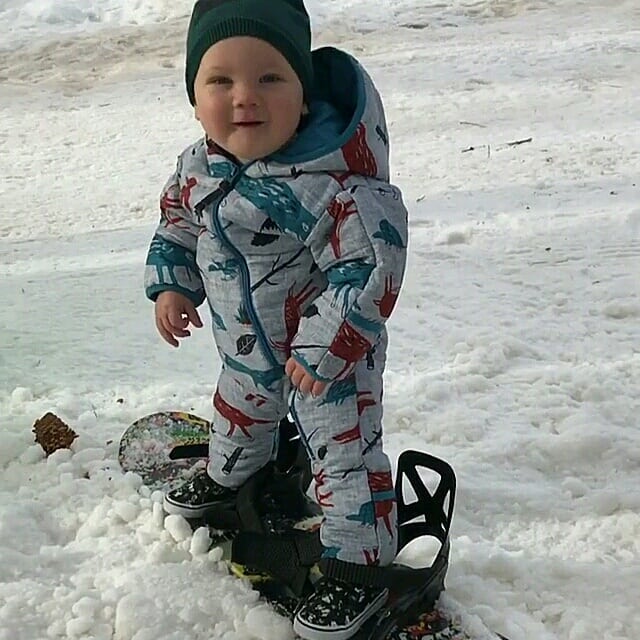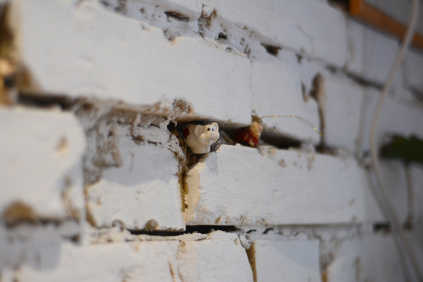A two-day course in design thinking taught me that a team is more than a group of people and that in our aim to reach our goals, failure can be a positive thing.

Katja Tschimmel introducing Laurea students to the fascinating world of design thinking.
Image: Suvi Seikkula.
During a two-day master class on Design Thinking, under the guidance of Katja Tschimmel, creator of the Mindshake Design Thinking Model Evolution 6², we worked in teams, going through the service design process and creating a service concept that would fit under the title “Studying at Laurea”. As a roadmap, we had the steps of the E6² model.
After a brief introduction, we were thrown head-first in at the deep end. Even though we had just met, in order to succeed we had to work as a team as if we had always done so. But why wouldn’t we be able to pull this off? After all, our instructors seemed to have full confidence in our ability to swim. Or maybe that wasn’t even relevant.
Failure is a part of the process.“Failure can be a positive thing,” Katja Tschimmel told us at the very start, echoing what she had written on the subject in her research paper Design Thinking as an effective Toolkit for Innovation: “failure is a part of the process”. It is integral to design thinking. Failures early on will save money, as it will push the process onto a better track. Accepting uncertainty and ambiguity is vital for a design thinker. You work with what you’ve got and it’s ok if you can’t swim.
Learning to swimWhen one team member runs out of ideas, another one takes over. One idea sparks another and at times it’s like fireworks! This is how teamwork soon started to feel.
As I’m a project manager by profession, I’m very familiar with teamwork and I embrace it. But teamwork has never felt quite like this. It was not just a bunch of individuals forming a group, it was a group effort to which each individual contributed. It was impossible to remember afterwards which part of the path was whose idea. We had the strength of the team. We had each other’s immediate feedback and no one was in it alone. You succeed as a team, you fail as a team.
Teamwork has never felt quite like this!The process was full of doubt, excitement, frustration, concentration. And occasional panic. The panic being created mostly by the deadline looming on the imminent horizon. But the timeframe was essential, as was the framework given by the Evolution 6² model. Otherwise, we might not have been able to stay focused. We could have easily stayed in the ideation phase forever, just a group of people discussing ideas. Moving on turned us from a group of people into a team.
A starting point, a roadmap and a goalDesign thinking is not just a way of thinking, it’s a toolkit. Within the framework, we had a varied selection of tools at our disposal. As the steps of the Evolution 6² model followed one another in rapid succession, so did the tools: media research, intent statement, mood board, user journey map, brainwriting, insight clustering, visual business model, rapid prototyping, feedback and others, in seemingly random order.

Tim Brown, the CEO of the design and consulting firm IDEO has taught us a thing or two about design thinking.
Image: Robert Scople, Flickr.
In his book, Change by Design, Tim Brown talks about the convergent and divergent phases of design thinking. They are about creating a sea of possibilities from which to select the most fitting through convergent thinking. We need both of these to reach our goals, “movement from the divergent phase that is the source of our inspiration to the convergent phase that is the roadmap to our solutions”.
Create a sea of possibilities, then make a choice.This idea of convergent and divergent thinking became most clear to me in the brainwriting phase of the process. In our version of this boosted type of brainstorming each member of the group took a bunch of post-it notes and sat down for a moment to write ideas around the concept we were creating, one on each note. After this, we grouped the ideas and discussed them together. So first there was silent divergence, to maximise the flow of ideas, then convergence in a group. The brainwriting phase of the process came just at the right moment, when we had an idea of the direction, but not an idea of the outcome. Afterwards, we could point to something and say: this is it, this is what we should develop further.
Brainwriting was one of the many tools with which we finally reached the goal. After the two intensive days my mind was full of ideas, creative energy and most importantly, a new way of thinking, design thinking. I had learned to swim. We had done it, as a team!

Lego bricks were one of the tools that helped us reach our goals during the design thinking process.
Image: Pixaday.

![26001282_10154964940871244_7311570372066288148_n[1]](/ai/032/489/32489.jpg)



